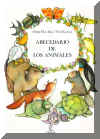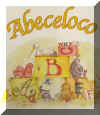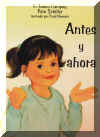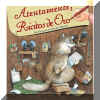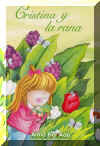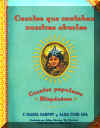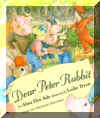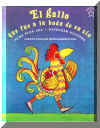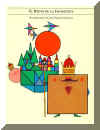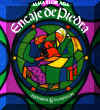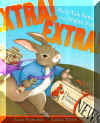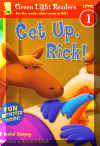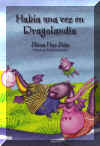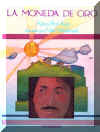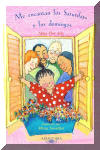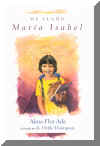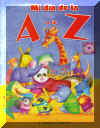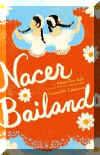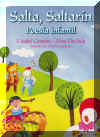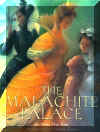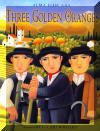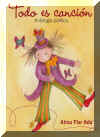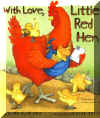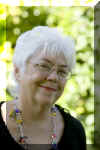 Author : Alma
Flor Ada, Illustrator : K. Dyble Thompson
Author : Alma
Flor Ada, Illustrator : K. Dyble Thompson2nd Grade and Up
 Author : Alma
Flor Ada, Illustrator : K. Dyble Thompson
Author : Alma
Flor Ada, Illustrator : K. Dyble Thompson
2nd Grade and Up
Me llamo Maria
Isabel
My Name
is Maria Isabel
 Me
llamo Maria Isabel, Softcover, Spanish, Book, Alma
Flor Ada, K. Dyble Thompson, 2nd Grade and Up, 9780689810992, $4.99
Me
llamo Maria Isabel, Softcover, Spanish, Book, Alma
Flor Ada, K. Dyble Thompson, 2nd Grade and Up, 9780689810992, $4.99
My Name is Maria Isabel,
Softcover,
English, Book, Alma
Flor Ada, K. Dyble Thompson, 2nd Grade and Up,
9780689802171, $4.99 Watch
My Name is Maria Isabel,
Hardcover, English, Book, Alma
Flor Ada, K. Dyble Thompson, 2nd Grade and Up,
9780689315176, $17.95 Watch
$277.52 for the Story Collection Green Books and CDs Spanish Set, Including 20%-Off, Free Shipping, and No Sales Tax : 1 Hardcover Spanish Book, 15 Softcover Spanish Books, 2 Softcover Spanish Oversized Books, 1 Spanish Big Book, 2 Spanish Storytelling CDs, 1 Bilingual Storytelling CD, and 1 Spanish Music CD
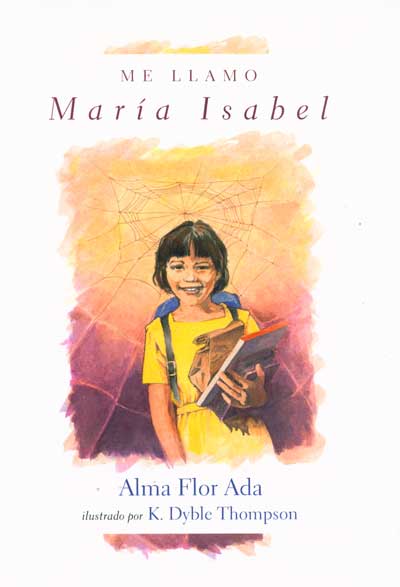 American Booksellers
Association, Pick of the List
American Booksellers
Association, Pick of the List
Center for Latin
American Studies, America´s Commended List
National Council of
Social Studies and the Children’s Book Council, Notable Book in the Area of
Social Studies
My Name is Maria Isabel Online Comprehension Quiz and more
Publishers Weekly : Armed with her new blue bookbag, Maria Isabel bravely faces her first day at a new school. But when she meets her new teacher, she is told there are already two other Marias in the class. "Why don't we call you Mary instead?" her teacher suggests, unaware that Maria was named for both her grandmothers, a grandfather and her father. Maria's inability to respond to "Mary" leads to more problems. Simply told, this story combines the struggle of a Puerto Rican family's efforts to improve their life with a shared sense of pride in their heritage. The author's carefully drawn characterizations avoid stereotypes, thus increasing their appeal and believability. An essay involving a wish list gives Maria a chance to reclaim her name, and allows her teacher to make amends. Abetted by Thompson's straightforward black-and-white drawings, this contemporary tale serves as a good reminder that no two names are really alike. Ages 7-10.
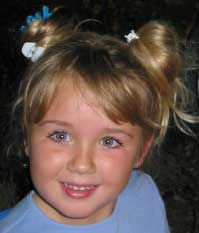 Watch
or Listen to Vienna Rose read
My Name is Maria Isabel to you. A marvelous example of the magical encounter
between a child and books that we wish for all children. And here's an earlier
reading by Vienna Rose, and an even
earlier reading.
Watch
or Listen to Vienna Rose read
My Name is Maria Isabel to you. A marvelous example of the magical encounter
between a child and books that we wish for all children. And here's an earlier
reading by Vienna Rose, and an even
earlier reading.
School Library Journal : Grade 3-4 This gentle story tells of Maria Isabel
Salazar Lopez, who finds herself dubbed "Mary Lopez" when her family
moves and she is placed in a class with two other Marias. Maria Isabel finds it
hard to respond to a name that does not seem like hers. Her teacher doesn't
understand why it is so difficult for her to answer to "Mary" until
the child is inspired to address her paper on "My Greatest Wish" to
the topic of her name. The result is not only a happy ending, but also an
affirming study of heritage and how it is integrally bound up in an individual's
sense of self. The brief text, adequately extended by line drawings, reads aloud
well and could certainly be used in conjunction with Gary Soto's The Skirt (Delacorte,
1992) to illustrate the Hispanic culture that is part of the lives of many
contemporary children.
Kirkus Reviews : When Maria Isabel Salazar Lopez's family moves, there are
already two Marias in her new class, so the teacher decides to call her Mary Lopez.
Since she doesn't readily recognize this new name, Maria Isabel is continually
scolded for being inattentive; worse, her pride in being named for her
grandmothers is dishonored. Maria Isabel's reluctance to assert her wish to be
called by her full name involves her in an apparent web of deception when she
doesn't get a part in a pageant (she doesn't recognize her name when the teacher
is assigning roles) but lets her parents believe she'll participate.
Fortunately, an essay assignment provides a solution: she finds the courage to
write that her ``greatest wish is to be called Maria Isabel Salazar Lopez,''
clearly explaining her reasons; and her teacher responds generously to her plea.
Cuban author Ada (The Gold Coin, 1991) captures the authentic flavor of Latino
culture in this warm, yet never sentimental, story: an entire family genealogy
is encapsulated in a Latino name, as well as special connections between its
bearer and the relatives for whom she was named. Presented in realistic terms,
Maria Isabel's struggles will ring true to many children in the US.
Amazon : For María Isabel Salazar López, the hardest thing about being the new
girl in school is that the teacher doesn't call her by her real name. "We
already have two Marías in this class," says her teacher. "Why don't
we call you Mary instead?" But María Isabel has been named for her
Papá's mother and for Chabela, her beloved Puerto Rican grandmother. Can she
find a way to make her teacher see that if she loses her name, she's lost the
most important part of herself?
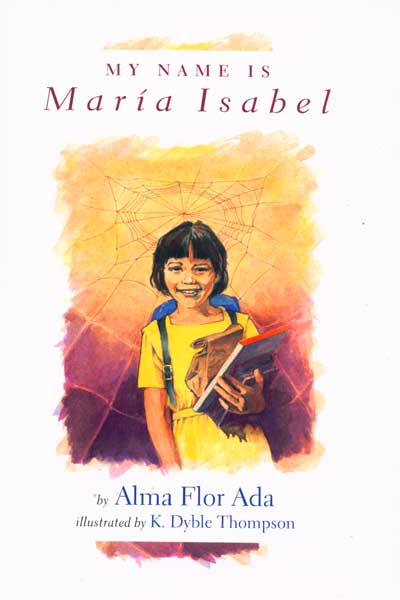 Karla
Rodriguez : This chapter
book is about a little girl, Maria Isabel, who has to go through the usual
challenges of being a new student. Her biggest problem, however, is to be called
Mary Lopez by her teacher instead of the name she was born with and is supremely
proud of-Maria Isabel Salazar Sanchez. To her, this name has so much meaning
because of her grandparents and feels that it is one of the most important
aspects about her. Throughout the book she struggles to find the courage to
stand up for the way she feels and to be understood by her teacher.
I like this book because it
highlights the Hispanic culture which allows Latino students to feel empowered
but also encourages respect and acceptance of other cultures since they are
focused on as well. I also like that the book revolves around the issue of
valuing student’s names and cultures and that it helps students and teachers
to realize that these are extremely important aspects of a person that should be
respected and understood. Currently,
I am using Maria Isabel for a book club and will use it to teach literacy while
integrating social studies, math, art, and issues of social justice. Social
studies ideas: studying Puerto Rican people who have made a change in
society, learning about Puerto Rico’s relationship with the United States. Literacy
ideas:character analysis, reading comprehension strategies, learning of literary
elements, persuasive writing, text to self connections, text to text
connections. Math ideas:graphing the increase of Maria Isabel’s courage
throughout the book. Social justice ideas: exploring their own identities
(all of these students are of Hispanic culture), exploring methods of how they
can be courageous, learning and exploring other cultures, learning about the
importance of their names and culture, exploring and accepting other people’s
holidays and traditions, teaching children conflict/resolution/communication
strategies Arts ideas:creating a web of problems and how to get out of it
and performing Amahl. Ways
in which it falls in the domains of sje: 1. Children
of Hispanic culture are encouraged to love and accept themselves. 2. Various
cultures are represented in the book and encourage acceptance of other’s
cultures, traditions, and holidays. 3. This
book deals with racism and oppression. 4. The
method in which Maria Isabel stands up for herself is through a courage driven,
detailed essay to the teacher describing why her culture is so important and why
devaluing her name and culture is like overlooking the biggest part of her.
Students will see how these small social movements can easily be done within the
classroom community. 5. This
book doesn’t directly apply to this domain. This
book can easily connect to the literacy curricular unit but not limited to the
subjects that have been mentioned above.
Karla
Rodriguez : This chapter
book is about a little girl, Maria Isabel, who has to go through the usual
challenges of being a new student. Her biggest problem, however, is to be called
Mary Lopez by her teacher instead of the name she was born with and is supremely
proud of-Maria Isabel Salazar Sanchez. To her, this name has so much meaning
because of her grandparents and feels that it is one of the most important
aspects about her. Throughout the book she struggles to find the courage to
stand up for the way she feels and to be understood by her teacher.
I like this book because it
highlights the Hispanic culture which allows Latino students to feel empowered
but also encourages respect and acceptance of other cultures since they are
focused on as well. I also like that the book revolves around the issue of
valuing student’s names and cultures and that it helps students and teachers
to realize that these are extremely important aspects of a person that should be
respected and understood. Currently,
I am using Maria Isabel for a book club and will use it to teach literacy while
integrating social studies, math, art, and issues of social justice. Social
studies ideas: studying Puerto Rican people who have made a change in
society, learning about Puerto Rico’s relationship with the United States. Literacy
ideas:character analysis, reading comprehension strategies, learning of literary
elements, persuasive writing, text to self connections, text to text
connections. Math ideas:graphing the increase of Maria Isabel’s courage
throughout the book. Social justice ideas: exploring their own identities
(all of these students are of Hispanic culture), exploring methods of how they
can be courageous, learning and exploring other cultures, learning about the
importance of their names and culture, exploring and accepting other people’s
holidays and traditions, teaching children conflict/resolution/communication
strategies Arts ideas:creating a web of problems and how to get out of it
and performing Amahl. Ways
in which it falls in the domains of sje: 1. Children
of Hispanic culture are encouraged to love and accept themselves. 2. Various
cultures are represented in the book and encourage acceptance of other’s
cultures, traditions, and holidays. 3. This
book deals with racism and oppression. 4. The
method in which Maria Isabel stands up for herself is through a courage driven,
detailed essay to the teacher describing why her culture is so important and why
devaluing her name and culture is like overlooking the biggest part of her.
Students will see how these small social movements can easily be done within the
classroom community. 5. This
book doesn’t directly apply to this domain. This
book can easily connect to the literacy curricular unit but not limited to the
subjects that have been mentioned above.
Erin : Written in Spanish, but also available in English under the title My Name is Maria Isabel, this sixty-page novel tells the story of a young girl and her struggles to adjust after moving from Puerto Rico to a school in New York that allowed students to learn in Spanish to a school in which she was expected to speak only English. Ada clearly marks this transition with a teacher who changes María Isabel's name to Mary, a distressing and confusing change for the child. Through this text, Alma Flor Ada, a native of Cuba, shares the daily life of a Puerto Rican family without preaching or prescribing. The plot is simple and uncrowded, told in the uncomplicatedly elegant language of a young girl finding her place in a new environment. I am concerned that it is set in New York, as so many books about Chicanos and Riqueños seem to be (there is even a term for Puerto Ricans in and around NYC: Nuyorican), but as this experience should resonate with many students who have lived in or visited family in New York, I am putting it in the category of generalization instead of stereotype. Overall, this is a text that I would be proud to stock in my classroom or hand to colleagues who wonder how their students from other countries feel.
Mrs
Jimenez : Discussion: I would start out saying: Class today we are going to
talk about names. Does anyone know how they got their name? I would wait for a
response. Tell class: Do you like your name? Did you know that there are
different kinds of names?
How would I teach this lesson? Class we are going to make an acrostic poem. An
acrostic poem is writing you name and writing things that symbolize you with
each letter of your first name. I have already prepared one for the class. I
will be passed around so everyone can take a look at the acrostic poem. When
everyone is finished we will discuss them. Later, today I will start reading a
book called, My name is Maria Isabel (2 chapters per day).
How would I re-teach the lesson? I would have my students’ look up their own
names in a name dictionary. Once they have written some information for their
names, as a class, we would discuss them one at a time.
Story
Collection Green Books and CDs
:
